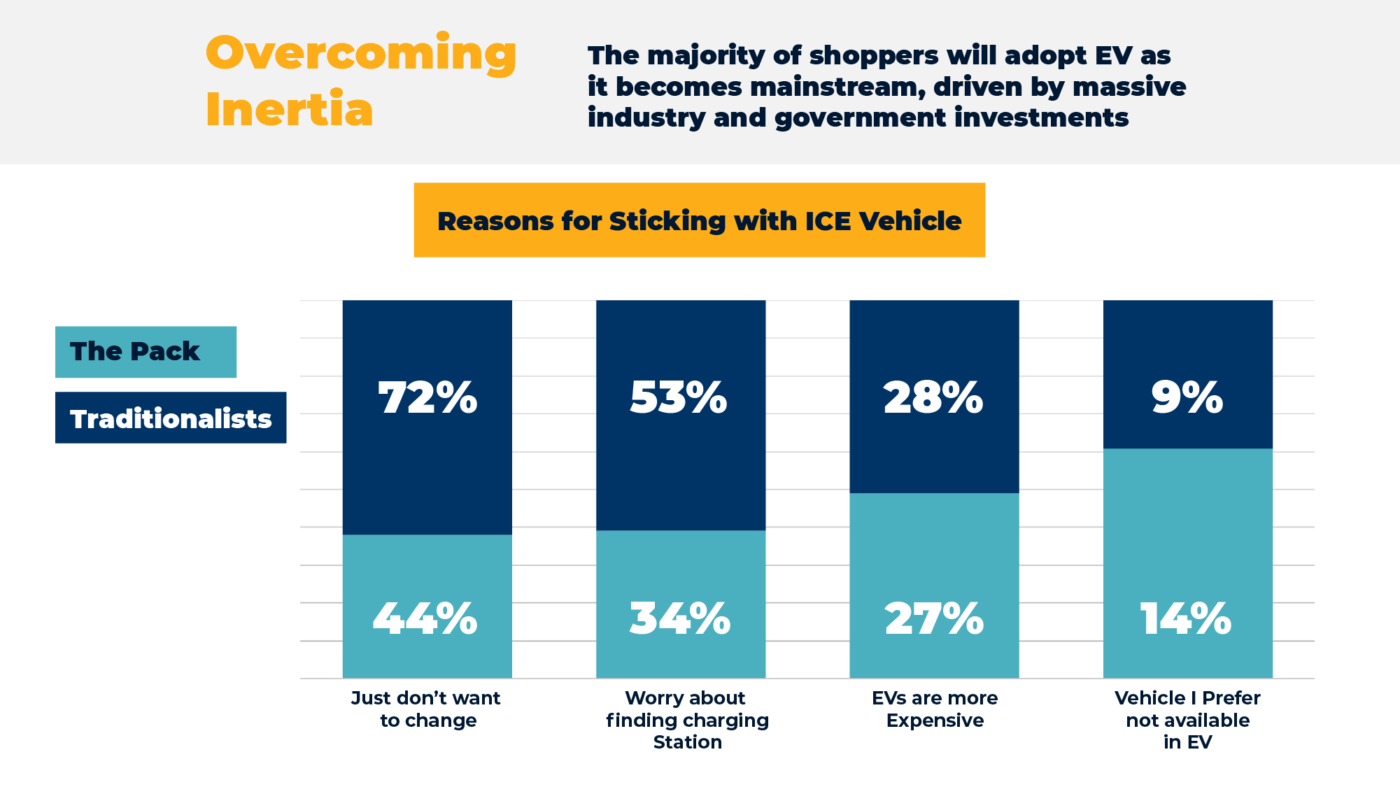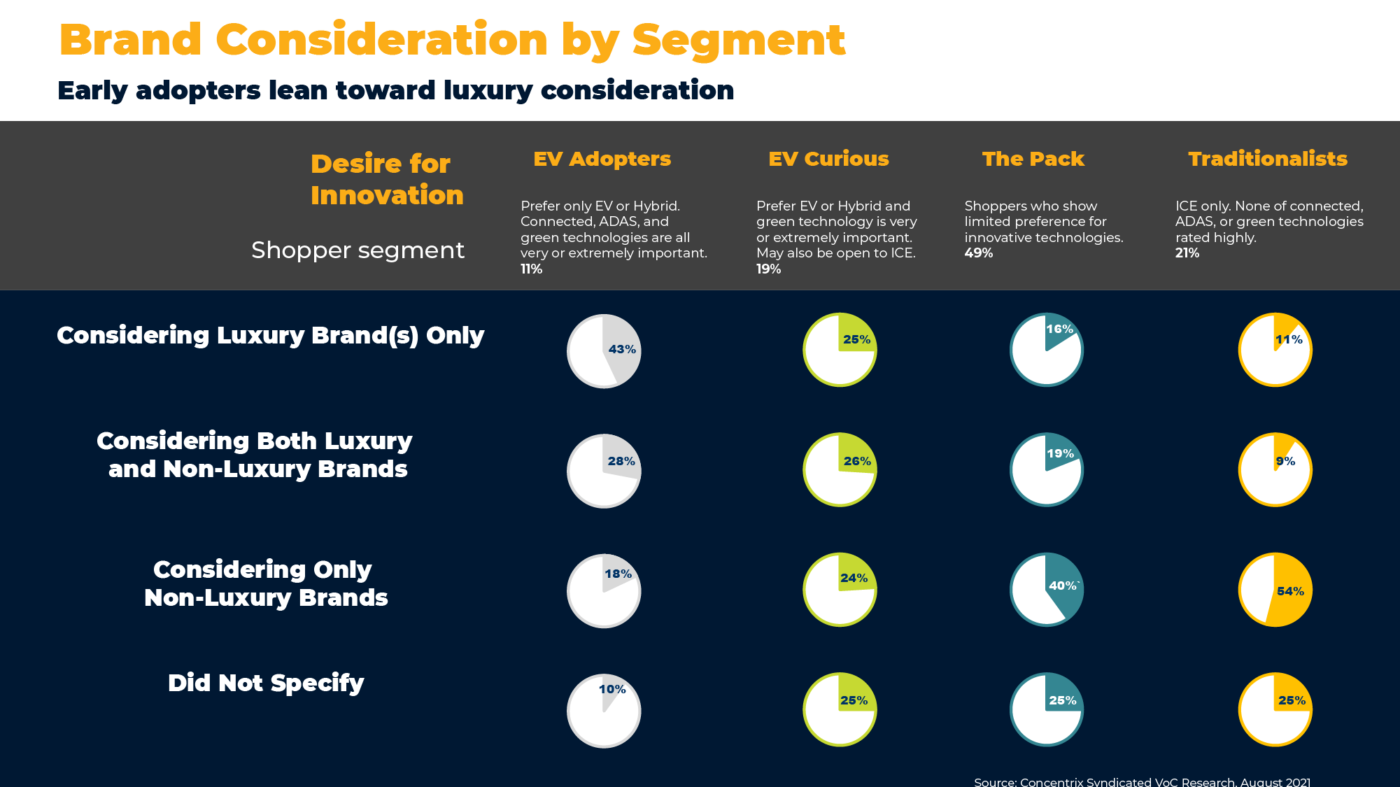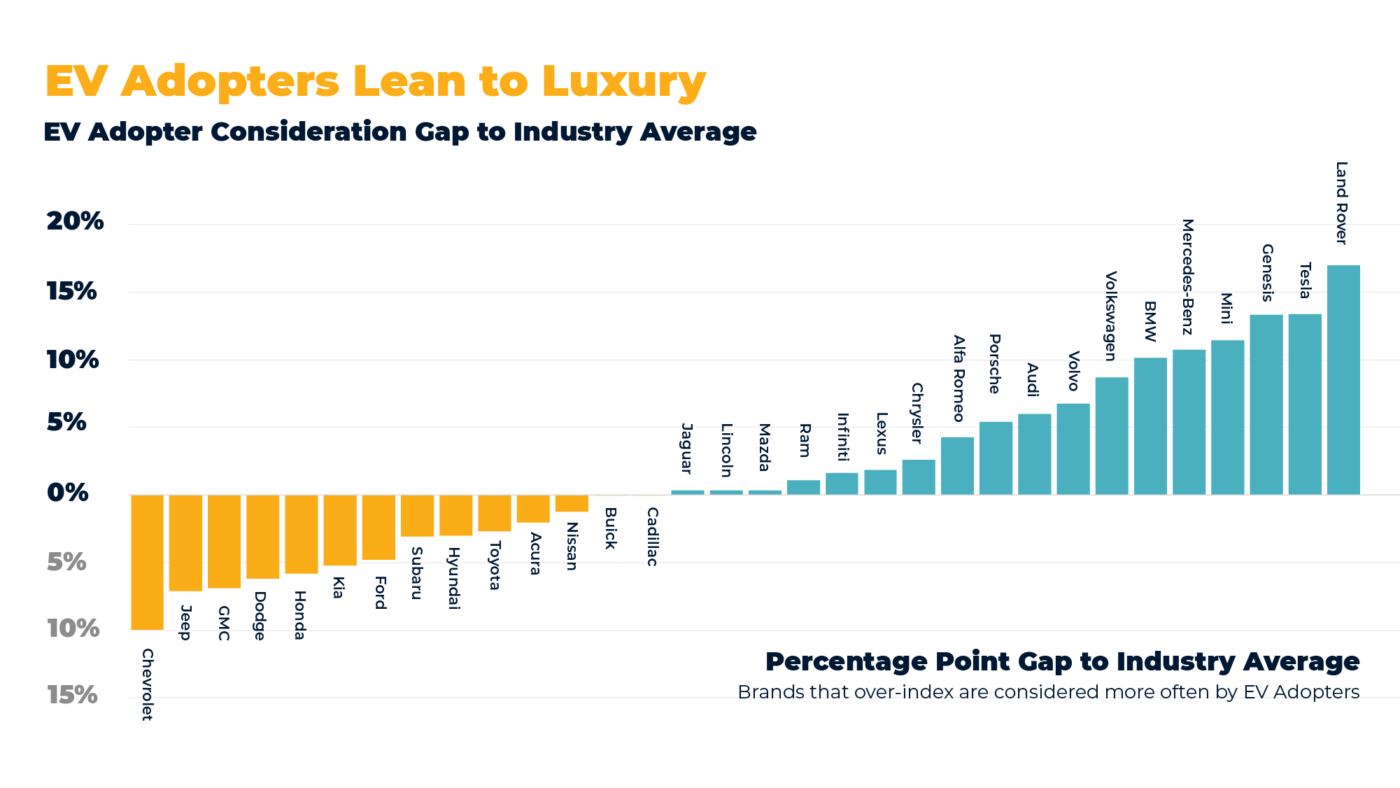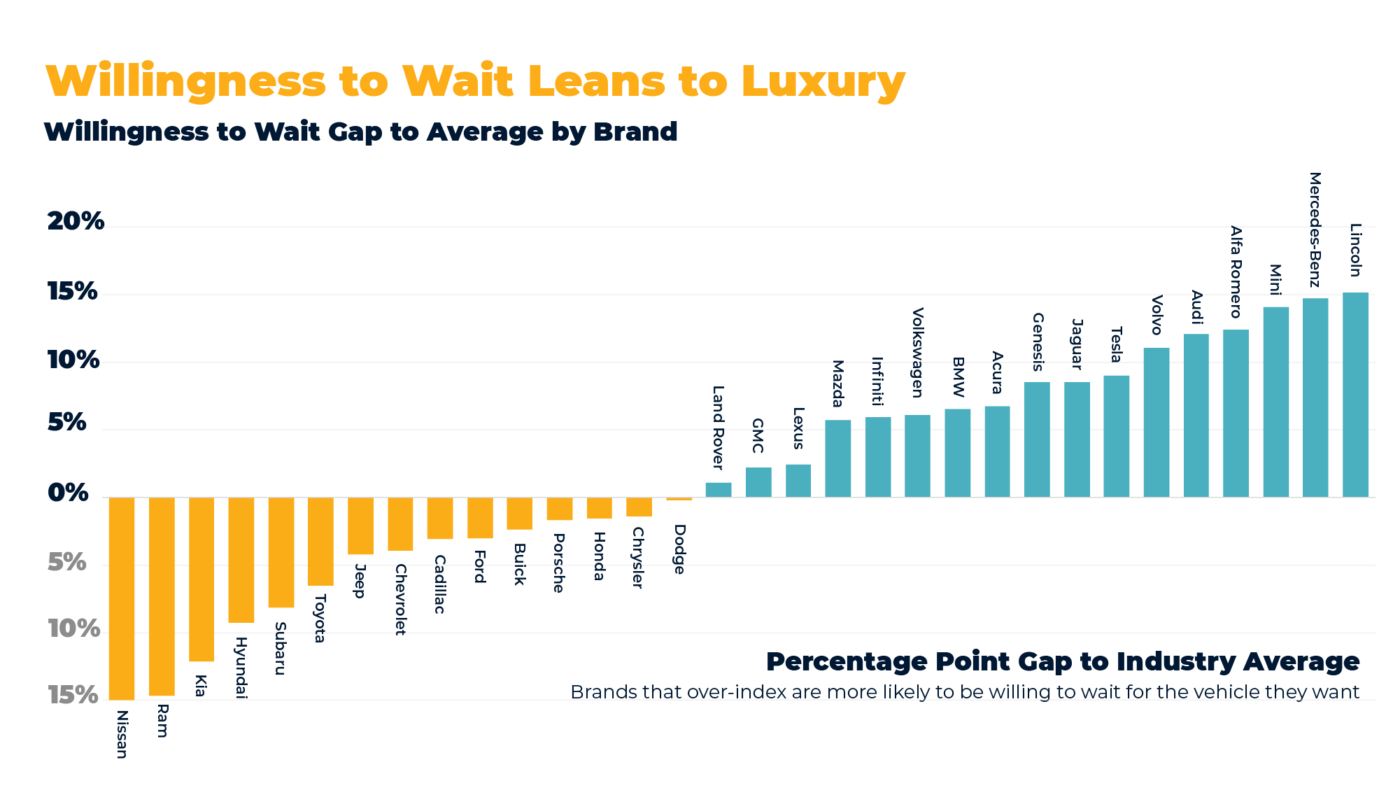POSTED : June 17, 2022
BY : Patrick Smith
Categories: CX Transformation

Buying a car in 2022 is no longer as simple as taking it for a spin at the dealership and deciding spontaneously if it’s the right fit. Customers are increasingly expecting seamless digital experiences across all transactions. They expect digital interactivity across all industries, and the automotive space is no exception. We evaluated innovative automotive shopping experiences across the industry on five key pillars to help you improve your CX:
In our previous post, we discussed how the automotive industry faces a period of significant change, and how buying preferences are changing simultaneously. Since we also examined the segments of buyers we identified in our market research, we’ll now outline focus areas to improve your brand’s automotive buying experience based on this knowledge.
Believe it or not, many brands still make their buying experience unnecessarily complicated. Confusion can arise when an in-app experience is different from a website or a dealership experience. For example, as you make the transition from digital experience to dealership experience, you’d want that to be seamless, right? As a Salesforce Automotive Cloud launch partner, we enable experiences that bridge the digital and physical world, and they’re powered by Salesforce. Vicki Poponi, VP Automotive Industry Advisor at Salesforce, says, “a customer’s online history should follow them offline. How can an we enrich the effort the customer has already put in online with additional data, and then transfer this info to the dealer, so the customer doesn’t have to start over at the dealership? This experience would then give the signal, “hey, we know you”—a key requirement for making a seamless transition from online shopping to an in-person experience.” In the current Digital Age, disjointed, clunky experiences are unacceptable since buyers have grown accustomed to seamless experiences when making purchases from brands across other industries.
Simplicity is hugely important in the vehicle buying process as well. Automotive brands must remember that everyday buyers do not know as much about the cars they are looking at as the salesperson they’re talking to—or the website they’re using. Strive to make the buying-process language in your storefront exceedingly simple and to design the digital experience UX intuitively for all customer types.

We think it goes without saying that no one wants to get scammed when making a large transaction, or even feel like they might be getting scammed. Transparency is key in the automotive industry, which has unfortunately gotten a bad rap about sketchiness related to cost transparency. According to our research, brands win at the automotive customer experience when they have all their costs—the key word being all—on their websites, without springing surprise costs on the customer at the time of transaction. Brands that do this signal that they respect their customers, because they are up front with them throughout the buying process.
In addition, bundled transactions are popular with the customers we surveyed. No one wants to get on the phone with multiple entities, including the financing bank and car insurance agency. Bundled transactions solve this headache for the customer, oftentimes without them even realizing they need the extra help until the time comes. Why wouldn’t a brand want to cut red tape and simplify this process for customers?
Lastly, pricing should be comprehensive, meaning that every single fee should be upfront. No excuses. It’s 2022—there’s no need to hide fees from your customers, who know better.

When’s the last time you completed a transaction that didn’t include at least one digital step in the process? How would you react to a brand that didn’t have a robust online presence—on a website, app, or both?
At this point, customers aren’t just annoyed at brands whose digital experience leaves something to be desired—they actively wonder why this is the case and may even question your aptitude as an organization, and if you’re worth their business.

The automotive space benefits from a robust digital presence even though it’s an industry in which experiencing the product physically is critical. One criteria in our CX framework measures how well a brand provides digital experiences to customers. We measure it through heuristic analysis of the overall digital experience: extent of interactive visualization, depth of product information, presence of user-generated content, and social proof. We found that the industry average score was a relatively poor 2.65 out of a possible 5, with the leader scoring 4.07. Obviously, the overall digitization of today’s buying experience, and all that goes into it, is critical to modernizing the automotive buying experience. This research data indicates that the automotive industry has ample room for improvement.
To improve digital experience in automotive, we’ve done the research around what each brand needs to do to raise its game. At minimum, we believe the following actions are critical to modernizing the overall customer experience and meeting customers’ future-state expectations:

Contextual, Personalized Reengagement
Everyone wants to feel special—even more so when making an expensive purchase. There are numerous reasons for brands to excel at personalization; within the car-buying experience, personalization soothes customer anxiety related to this major purchase that typically impacts years ahead. Personalization also reassures that the brand understands customer needs and preferences. There’s no such thing as a standard journey car buying, with some people taking months or even years to complete. Automotive brands, therefore, should always remain focused on keeping customers engaged from where they last left off within the transactional process, offering compelling reminders to complete the buying journey in-house—instead of with a competitor.
Customers are masters of their own journeys, and brands need to respect this in the buying experience they provide. Maybe you prefer to purchase your car completely at the dealership. Maybe the idea of going to a dealership turns you off and you’d prefer to transact online and take delivery in your driveway. Or, maybe you’re somewhere in between. We’ve found that automotive brands providing the best CX typically offer multiple options for completing transactions, offering a dynamic mix and match approach.
Automotive brands should understand that we’re not myopically looking at the customer experience through an automotive lens alone. We’re comparing CX best practices within the automotive space to those of other industries, including consumer technology and finance, since the major changes taking place in these verticals are the most groundbreaking in over a century.
So, the question remains: do you want to create experiences for the leaders or the laggards? In other words—do you want to get ahead of the pack? If you want to design and build the buying experience of the future, we have the expertise to lead you through the new automotive buyer experience, and we’re partnering with Salesforce to power next-gen services to support OEMs and their dealers. Reach out to us for more information.
Learn more about how you can supercharge your automotive buying experience.

Senior Director, Product Strategy and Marketing